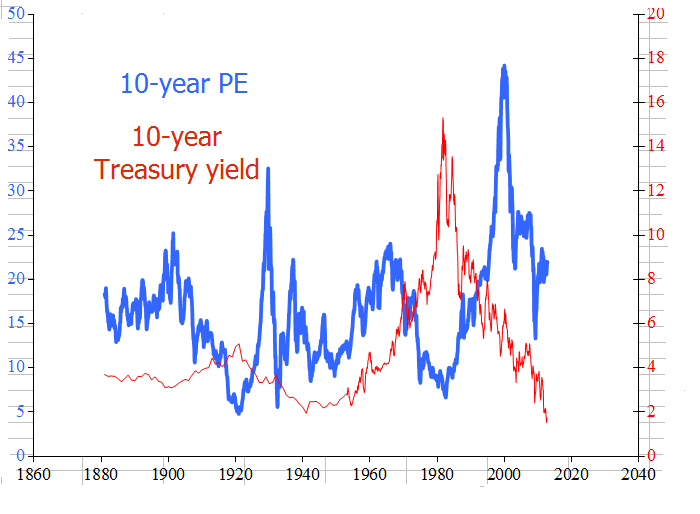The year 2016 was, for lack of better description, a strange one.
It started with one of the worst Januarys in history for stocks and an oil price bust.
Then came a run of populist election surprises in Europe and the United States, and wrapped up with the Trump Rally.
So after a year like that, what will 2017 bring? Here are some investing ideas that may help shape your thinking.

REITS
I really believe real estate investment trusts (REITs) are the single most attractive American asset class right now. REITs have gotten utterly obliterated by the recent surge in bond yields.
As a sector, they are down about 14% from their summer highs, and many of the more “bond-like” conservative REITs are down by closer to 30% as of December 19.
That’s ugly.
REITs are sensitive to bond yields for two reasons. First, they borrow a lot of money to buy their properties, so higher market interest rates cut directly into profits.
Secondly, as income-focused investments, they are priced relative to bonds. So as bond yields rise (and bond prices fall), REIT yields rise (and prices fall).
Inflation Hedge
Remember: REITs, unlike bonds, actually enjoy a rising payout over time. REITs tend to raise their dividend by at least a couple percent per year, more than keeping pace with inflation.
And should the inflation that everyone seems to fear from a Trump presidency come to fruition, real estate should perform at least moderately well, in my opinion, as real estate is a natural inflation hedge.
That makes the Vanguard REIT ETF (VNQ) — which holds REITs such as Simon Property Group Inc (SPG) and Public Storage (PSA) — a natural play here in my opinion.
ENERGY
The past two years have been rough for investors in energy stocks.
If low oil and gas prices weren’t bad enough, there has also been constant political opposition to domestic infrastructure projects, such as the Keystone Pipeline and the Dakota Access Pipeline, both of which became cause célèbres for environmental activists.
Well, it remains to be seen what direction oil and gas prices go from here. The OPEC meeting late last year seemed to show that the major crude exporters are serious about keeping prices stable.
Pipeline Politics
But virtually every member of the cartel is also known to cheat on their quotas, so we’ll see how this agreement sticks.
But regardless of what direction oil and gas prices go, I think it is all but certain that energy infrastructure does well. President-Elect Trump has already said that he intends to give the green light to the two contentious pipelines, and I expect that this is only the beginning.
Meanwhile, in my opinion, midstream pipeline stocks are cheap after the thrashing they took in 2015.
So, in my opinion, adding MLPs such as Kinder Morgan Inc (KMI) to your portfolio makes sense.Or you could add Energy Transfer Equity LP (ETE).
BONDS
Hear me out. I’m actually not going to recommend that you back up the truck and load up on bonds.
Even after the massive surge in yields in 2016, in my opinion, bonds still don’t yield enough to be worth a major speculative allocation right now.
But let’s say that you’re in or near retirement and that you’re investing along the lines of a traditional 60/40 portfolio.
The bonds aren’t going to be a major source of return at current yields, but they could definitely still be valuable as volatility reducers.
And this would seem like a sensible time to rebalance. Stocks have been flying ever since the election, but bonds are down sharply.
Overheated Stocks
I expect stocks to cool down, at least for a few months, and I expect bonds to recoup a fair bit of their losses. We may not see bond yields back at July levels again, but I do expect them to be lower than they are today.
In my view, the market is spooked that republican control of Congress and the presidency will lead to large deficits and resurgent inflation.
But if large deficits were all that it took to stoke inflation, then Japan would have the highest inflation in the world right now. It doesn’t.
So, if you’re due for a portfolio rebalance, I believe this would be a sensible time to do it, when stocks risen a little too far too fast, and bonds have fallen a little too far too fast.
One suggestion is the iShares 7-10 Year Treasury Bond ETF (IEF), which holds intermediate-term bonds.
CONSUMER STAPLES
While the broad market is expensive right now, not all sectors are equally overpriced. Some, like automakers, are actually pretty cheap.
But consumer staples stocks are just about prohibitively expensive.
Investors have been wary of this bull market for year and have responded by staying invested, but doing so by overweighting the sectors that are traditionally considered the most conservative, such as consumer staples.
The result has been an overpricing of these “safe” sectors to the point that they are no longer safe.
Rich Valuations
Even the most stable and predictable business can be a lousy buy at a price that is too high. Procter & Gamble Co (PG) and Colgate-Palmolive Company (CL) sport price-to-earnings ratios north of 20. Not worth it, in my view.
My advice is to stick with cheap consumer cyclicals via the Consumer Discretionary SPDR ETF (XLY).
As I mentioned, automakers are particularly cheap, and the market seems to be pricing in steep declines in sales.
So if anything other than the worst-case scenario happens, I believe cheap consumer discretionary stocks should do just fine.
Photo Credit: Nigel Howe via Flickr Creative Commons
The following is an excerpt from an article originally published on InvestorPlace.




